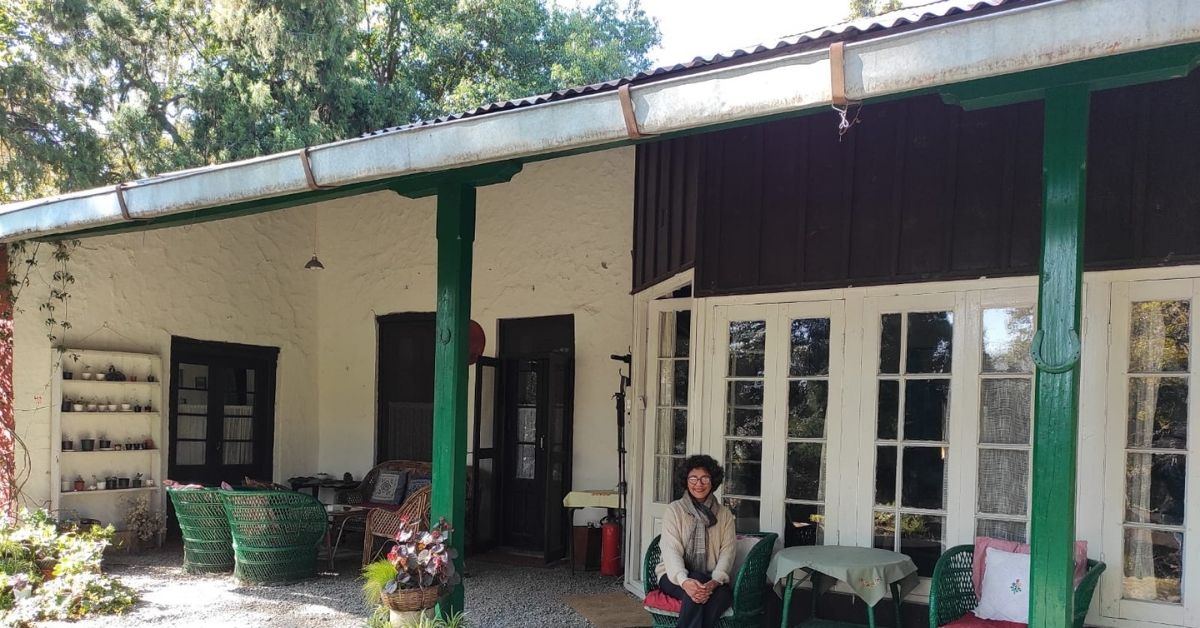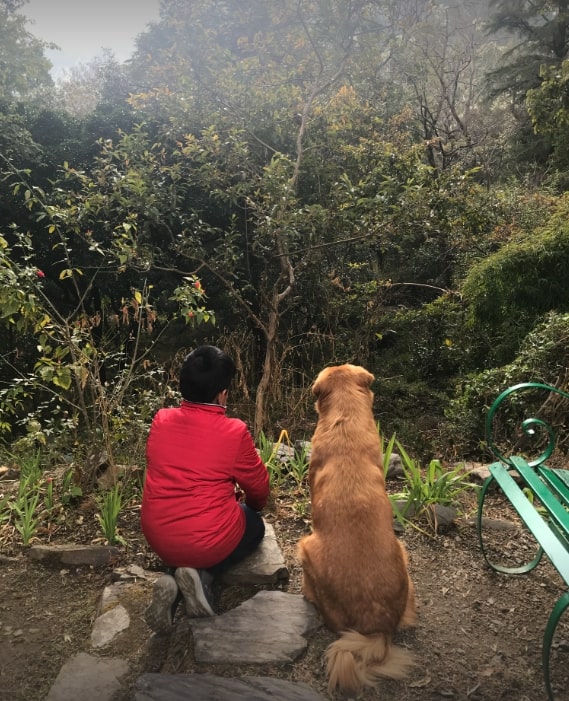What Connects Hitler & Tipu Sultan? This Unique Eco-Friendly ‘Retreat’ in Kumaon
Nestled among the foothills of the Kumaon region of Uttarakhand, The Retreat is a guesthouse that was made by a German who escaped Germany after a failed assassination attempt of Adolf Hitler.

Edward James Corbett paints a picturesque landscape of Uttarakhand’s Kumaon region in a book. He describes a place from where Nainital, Bhimtal and Sattal lake can be seen from atop a hill.
The book was released around the 1930s but it was only some 70 years later when Padmini, owner of Retreat homestay, found out that her homestay is the only place from where this view was visible.
“I don’t remember the book’s name but it was a private edition with around 300-500 copies. As far as my knowledge goes, there are only 2-3 copies in the world and one of them was at the Jind estate where SOS Children’s Village NGO operated. I had read the book in 1980s when my father was a director. Based on the description, it is safe to conclude that Jim Corbett stayed at the guest house some decades ago,” Padmini tells The Better India.

The Retreat homestay holds several fascinating tales like these with famous personalities having visited the house.
The family recalls that former Prime Minister Indira Gandhi had also once visited his scenic colonial house nestled between deodar and oak trees. More recently, director Shekhar Kapoor lived here for three months in 2020. Interestingly, some parts of his movie ‘Masoom’ (1983) are shot at this house.
“This 154-year-old house has hosted diplomats from around the world over the years. We have had author Bruce Chatwin as well. It was only in 2011 that we opened it for the general public. Since then we host an average of over 100 guests annually,” adds Padmini.
The house was originally a tea estate that was converted into a homestay by Padmini’s father-in-law, Frederick Smetacek. He hailed from the Sudetenland, a German-speaking enclave that was part of Czechoslovakia.
His journey to India, particularly Bhimtal is an interesting story that involves Adolf Hitler and Tipu Sultan.
Way before Kumaon was recognised by its lakes and mountains around India, Frederick had made Bhimtal his home. His presence drew attention from people around the world and put the quaint albeit charming town on the tourism map.
A Tryst With History

In 1853, a tea estate spread over a thousand acres was sold to British planters. Almost a century later, Colonel Bertram Owen Jones owned it. He later sold it to Frederick in partnership with Major General Madan Shamsher Jung Bahadur Rana and the Rani of Balrampur.
But Frederick’s entry into India was a dramatic one. He had fled the Nazis after an unsuccessful assassination attempt of Adolf Hitler before the Second World War. He sailed to India and settled in then Calcutta. Here he met his wife, Shaheda Ahad who was a descendant of Tipu Sultan.
Just a year before Partition, the couple moved to Naukuchiatal in Kumaon. And in 1951, he started a guest house for diplomats. The duo’s hospitality resulted in several diplomats visiting the house.
Frederick was fascinated with nature. An avid entomologist, he soon came to be known as the man with an extensive collection of butterflies and moths. His and his son Peter’s collection is available at the Butterfly Research Centre.
Frederick dipped his toes into several professions, from business to agriculture. He even stopped the commercialisation of timber from the forest despite having the permissions for conservation purposes.
“He planted several trees and orchards in the forest area. We have deodar, oak, cypress, padam or wild cherry. Presently, we own a part of that forest whose trail has become a favourite among tourists,” says Padmini.
A Sustainable, Solitude Retreat

Built in the colonial style with large windows and openings, the house was constructed using local stone and mud. A mortar of clay, cow dung and straw was used to hold the stones together. Like the traditional Kumaon style of architecture, the walls are thick to make the property more energy-efficient.
The interior of the house will transport you to ancient times with period furniture, several antiques, paintings, old china and water jugs with cracks placed in different rooms. The silverware of the British Raj times is sometimes used to serve meals.
The guests are offered either Indian or Continental cuisine at additional costs.
“We prepare all kinds of meals — vegetarian, vegan, non-vegetarian, gluten-free, Jain and diabetic meals. We use locally sourced fresh ingredients and home-grown herbs to prepare a wholesome meal,” says Padmini.
The house makes for a perfect weekend getaway with lakes, trees and more importantly solitude in place.

“The best kind of holidays are the ones that allow you to get lost. In January 2020, armed with enough woollens we made our way to this quaint little cottage. The first word that comes to mind when you enter this place is how well hidden this gem is. Though this was a trip we took almost three years ago, I still remember how the food tasted! The freshly baked bread and local cuisine were absolutely the best we have had. Set deep inside the woods, this homestay is truly one of its kind,” says Vidya Raja, a resident of Gurugram.
Click here to check out The Retreat
(Edited by Yoshita Rao)
If you found our stories insightful, informative, or even just enjoyable, we invite you to consider making a voluntary payment to support the work we do at The Better India. Your contribution helps us continue producing quality content that educates, inspires, and drives positive change.
Choose one of the payment options below for your contribution-
By paying for the stories you value, you directly contribute to sustaining our efforts focused on making a difference in the world. Together, let’s ensure that impactful stories continue to be told and shared, enriching lives and communities alike.
Thank you for your support. Here are some frequently asked questions you might find helpful to know why you are contributing?


This story made me
-
97
-
121
-
89
-
167











